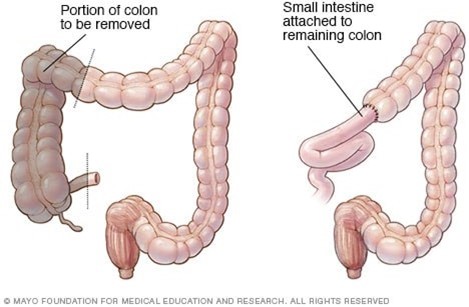A nurse is caring for a client who is postoperative following a hemicolectomy. Which of the following is a subjective indication that the client needs PRN pain medication?
The client's heart rate is 110/min.
The client is guarding their abdominal incision.
The client exhibits facial grimacing.
The client reports pain.
The Correct Answer is D
The subjective indication that the client needs PRN (as needed) pain medication is when the client reports pain. Pain is a subjective experience, and it is essential to address the client's self-reported pain level and provide appropriate pain management.
Explanation for the other options:
a) The client's heart rate is 110/min: An increased heart rate can be an objective indication of pain, but it is not a subjective indication. Subjective indications are based on the client's self-report or personal experiences.
b) The client is guarding their abdominal incision: Guarding the abdominal incision may suggest discomfort or pain, but it is an objective indication that can be observed by the nurse. Subjective indications focus on the client's self-report.
c) The client exhibits facial grimacing: Facial grimacing can be an objective indication of pain, but it is not a subjective indication. Again, subjective indications are based on the client's self-report or personal experiences.
In this scenario, the most reliable and appropriate indication for administering PRN pain medication is when the client reports pain, as this acknowledges the client's own perception of their pain level.

Nursing Test Bank
Naxlex Comprehensive Predictor Exams
Related Questions
Correct Answer is C
Explanation
Answer: C
Rationale:
A) Apply a topical corticosteroid ointment to the scalp: Corticosteroids are not indicated for the treatment of Pediculosis capitis (head lice). The treatment focuses on eliminating the lice and nits, typically through pediculicide medications like permethrin or ivermectin. Corticosteroids are used to reduce inflammation and itching, but they do not kill the lice or their eggs.
B) Soak hair brushes and combs in soapy water: Soaking hair brushes and combs in soapy water alone is not sufficient to kill lice. Items such as hair brushes should be soaked in hot water (130°F or higher) for at least 5-10 minutes to ensure any lice or nits present are killed. This is a critical step to prevent reinfestation.
C) Wash the bed linens in hot water: Washing bed linens in hot water (130°F or higher) is essential to eliminate lice and nits that may have transferred onto bedding. This prevents the spread and recurrence of lice. Items that cannot be washed should be sealed in a plastic bag for 2 weeks to kill the lice.
D) Clean the child's toys with a 1:10 bleach solution: Lice are spread through direct contact and cannot live on inanimate objects for long periods. Cleaning toys with bleach is unnecessary for lice removal and can be harmful to the toys or the child if not properly rinsed.

Correct Answer is A
Explanation
a. Giving broad openings
The nurse is using the therapeutic technique of giving broad openings. This technique encourages the client to freely express themselves and choose the focus of the conversation. By asking, "What has been happening with you today?" the nurse is inviting the client to share their thoughts, feelings, and experiences without imposing any specific topic or direction.
Explanation for the other options:
b. Focusing: Focusing is a therapeutic technique where the nurse directs the conversation to a specific topic or issue. In this scenario, the nurse is not guiding the client's response toward a particular area of discussion.
c. Reflecting: Reflecting is a therapeutic technique where the nurse repeats or paraphrases the client's words or feelings to demonstrate understanding and encourage further exploration. The nurse's statement in this scenario does not involve reflecting the client's words or feelings.
d. Seeking clarification: Seeking clarification is a therapeutic technique used to obtain more specific information or clear up any confusion. The nurse's statement in this scenario does not involve seeking clarification from the client.
In summary, by using a broad opening, the nurse allows the client to choose the focus of the conversation
and encourages them to share their experiences and concerns.
Whether you are a student looking to ace your exams or a practicing nurse seeking to enhance your expertise , our nursing education contents will empower you with the confidence and competence to make a difference in the lives of patients and become a respected leader in the healthcare field.
Visit Naxlex, invest in your future and unlock endless possibilities with our unparalleled nursing education contents today
Report Wrong Answer on the Current Question
Do you disagree with the answer? If yes, what is your expected answer? Explain.
Kindly be descriptive with the issue you are facing.
